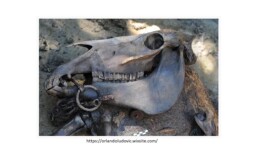
MARENGO
PorteursLudovic OrlandoAffiliation porteursCAGT-CNRS UMR 5288, Toulouse
Harnessing the power of ancient genome imputation to reconstruct 2,000 years of horse breeding in France
The horse represents the most characterized non-human species at the ancient genomic level, with 450+ ancient genome sequences partially obtained thanks to the support of the large-scale project BUCEPHALE funded by France Génomique in 2017.
The sequence variation underlying such ancient genomes has truly revolutionized understanding of the horse domestication process, revealing (1) the survival of genetic lineages that are no longer present in modern breeds until ~4,500 years ago (Schubert et al. 2014a, Librado et al. 2015, Fages et al. 2019), (2) the presence of a first but abortive domestication process in Central Asia some ~5,000-years ago (Gaunitz et al. 2018), (3) the genetic homeland of modern domestic horses in the lower Don-Volga region some ~4,000 years ago (Librado et al. 2021) and; (4) the growing influence of Oriental bloodlines and the emergence of modern bloodlines within the last 1,500 years (Fages et al. 2019).
However, the last 2,000 years represent an essential time period for the emergence of modern horse domestic breeds as it was accompanied by a worldwide decline in the genetic diversity of domestic bloodlines. This was most likely the result of changes in breeding practices. In France, and probably more generally across western Europe, the last 2,000 years-time period also showed different distributions of equine resources across regions, social and cultural contexts. Not to forget major historical battles and invasions resulting probably with horse genomic makeup. The application of genome imputation techniques to data genotyping and low depth genome sequencing data on a set of ~1500 ancient horses should be immediately highly impactful and beneficial to reconstruct 2,000 years of horse breeding in France

